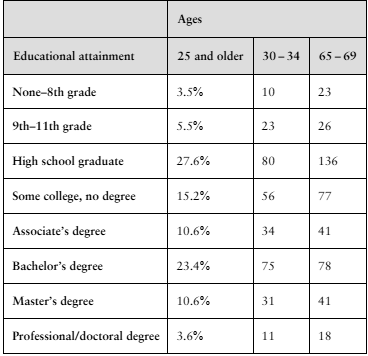In your own words, explain why the hypothesis test discussed in this section is called the runs test.
Table of contents
- 1. Intro to Stats and Collecting Data1h 14m
- 2. Describing Data with Tables and Graphs1h 55m
- 3. Describing Data Numerically2h 5m
- 4. Probability2h 16m
- 5. Binomial Distribution & Discrete Random Variables3h 6m
- 6. Normal Distribution and Continuous Random Variables2h 11m
- 7. Sampling Distributions & Confidence Intervals: Mean3h 23m
- Sampling Distribution of the Sample Mean and Central Limit Theorem19m
- Distribution of Sample Mean - Excel23m
- Introduction to Confidence Intervals15m
- Confidence Intervals for Population Mean1h 18m
- Determining the Minimum Sample Size Required12m
- Finding Probabilities and T Critical Values - Excel28m
- Confidence Intervals for Population Means - Excel25m
- 8. Sampling Distributions & Confidence Intervals: Proportion1h 25m
- 9. Hypothesis Testing for One Sample3h 57m
- 10. Hypothesis Testing for Two Samples4h 50m
- Two Proportions1h 13m
- Two Proportions Hypothesis Test - Excel28m
- Two Means - Unknown, Unequal Variance1h 3m
- Two Means - Unknown Variances Hypothesis Test - Excel12m
- Two Means - Unknown, Equal Variance15m
- Two Means - Unknown, Equal Variances Hypothesis Test - Excel9m
- Two Means - Known Variance12m
- Two Means - Sigma Known Hypothesis Test - Excel21m
- Two Means - Matched Pairs (Dependent Samples)42m
- Matched Pairs Hypothesis Test - Excel12m
- 11. Correlation1h 24m
- 12. Regression1h 50m
- 13. Chi-Square Tests & Goodness of Fit2h 21m
- 14. ANOVA1h 57m
9. Hypothesis Testing for One Sample
Steps in Hypothesis Testing
Problem 10.Q.2d
Textbook Question
In each exercise,
d. decide whether to reject or fail to reject the null hypothesis, and
e. interpret the decision in the context of the original claim.
In Exercises 1 and 2, use the table, which lists the distribution of educational achievement for people in the United States ages 25 and older. It also lists the results of a random survey for two additional age groups. (Adapted from U.S. Census Bureau)

Use the data for 30- to 34-year-olds and 65- to 69-year-olds to test whether age and educational attainment are related. Use α=0.01.
 Verified step by step guidance
Verified step by step guidance1
Step 1: Define the null hypothesis (H₀) and the alternative hypothesis (H₁). The null hypothesis states that age and educational attainment are not related (independent). The alternative hypothesis states that age and educational attainment are related (dependent).
Step 2: Choose the significance level (α). In this case, α = 0.01, which means there is a 1% risk of rejecting the null hypothesis when it is true.
Step 3: Organize the data into a contingency table. Use the provided table to structure the observed frequencies for the two age groups (30–34 and 65–69) across the educational attainment categories.
Step 4: Calculate the expected frequencies for each cell in the contingency table. Use the formula: E = (row total × column total) / grand total, where E represents the expected frequency for a cell.
Step 5: Perform a chi-square test for independence. Compute the test statistic using the formula: χ² = Σ((O - E)² / E), where O is the observed frequency and E is the expected frequency. Compare the calculated χ² value to the critical value from the chi-square distribution table at α = 0.01 with the appropriate degrees of freedom (df = (number of rows - 1) × (number of columns - 1)). Decide whether to reject or fail to reject the null hypothesis based on this comparison.
 Verified video answer for a similar problem:
Verified video answer for a similar problem:This video solution was recommended by our tutors as helpful for the problem above
Video duration:
3mPlay a video:
Was this helpful?
Key Concepts
Here are the essential concepts you must grasp in order to answer the question correctly.
Null Hypothesis
The null hypothesis is a statement that there is no effect or no difference, and it serves as a starting point for statistical testing. In this context, it would assert that there is no relationship between age and educational attainment. Researchers aim to gather evidence to either reject or fail to reject this hypothesis based on the data collected.
Recommended video:
Guided course

Step 1: Write Hypotheses
Significance Level (α)
The significance level, denoted as α, is the threshold for determining whether to reject the null hypothesis. In this case, α is set at 0.01, meaning there is a 1% risk of concluding that a relationship exists when there is none. This stringent level indicates a strong requirement for evidence before rejecting the null hypothesis.
Recommended video:

Finding Binomial Probabilities Using TI-84 Example 1
Chi-Square Test
The Chi-Square test is a statistical method used to determine if there is a significant association between categorical variables. In this scenario, it will be applied to assess whether age groups (30-34 and 65-69) are related to different levels of educational attainment. The test compares observed frequencies in each category to expected frequencies under the null hypothesis.
Recommended video:
Guided course

Intro to Least Squares Regression

 5:12m
5:12mWatch next
Master Intro to Hypothesis Testing with a bite sized video explanation from Patrick
Start learningRelated Videos
Related Practice
Textbook Question
27
views
